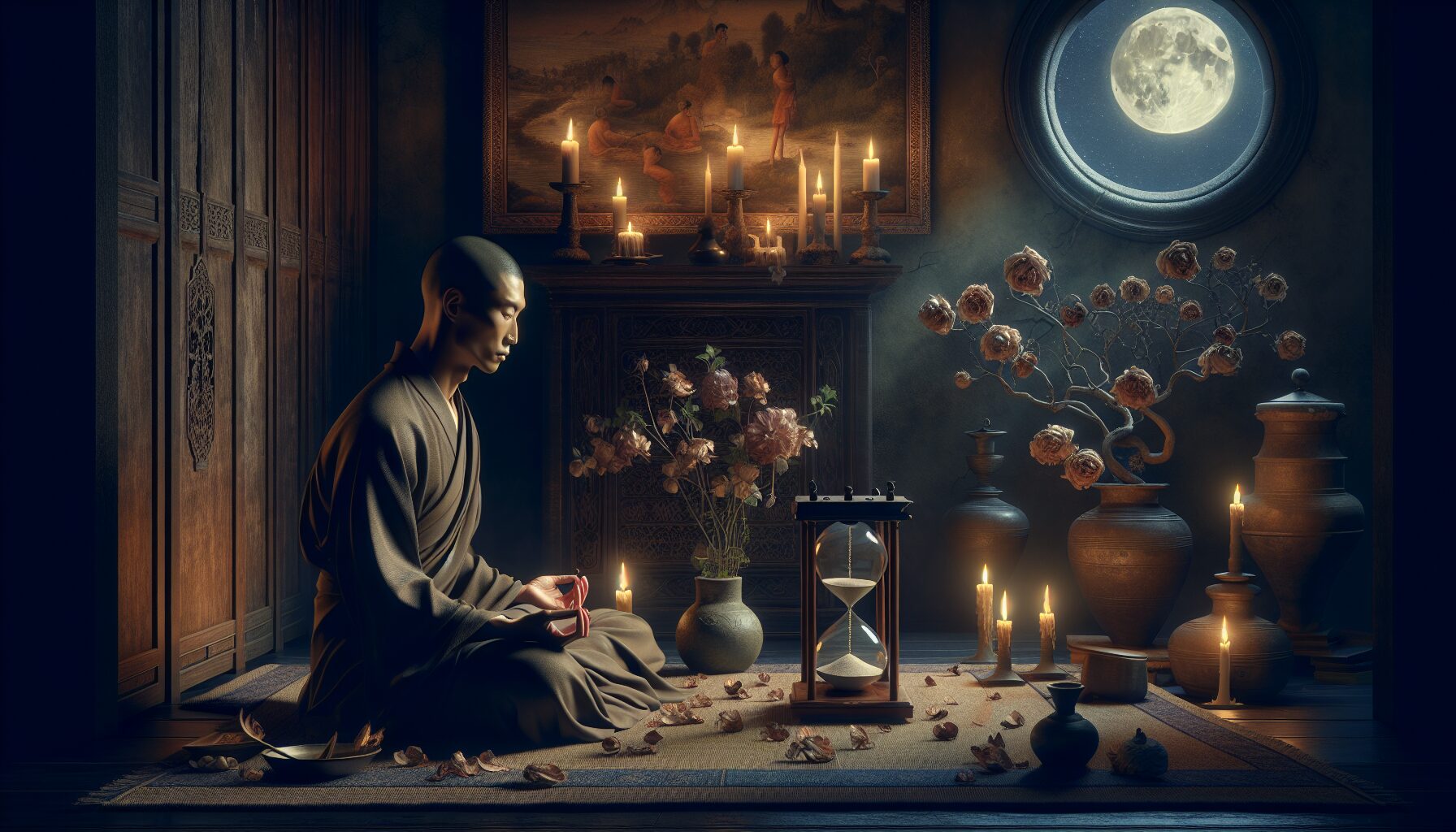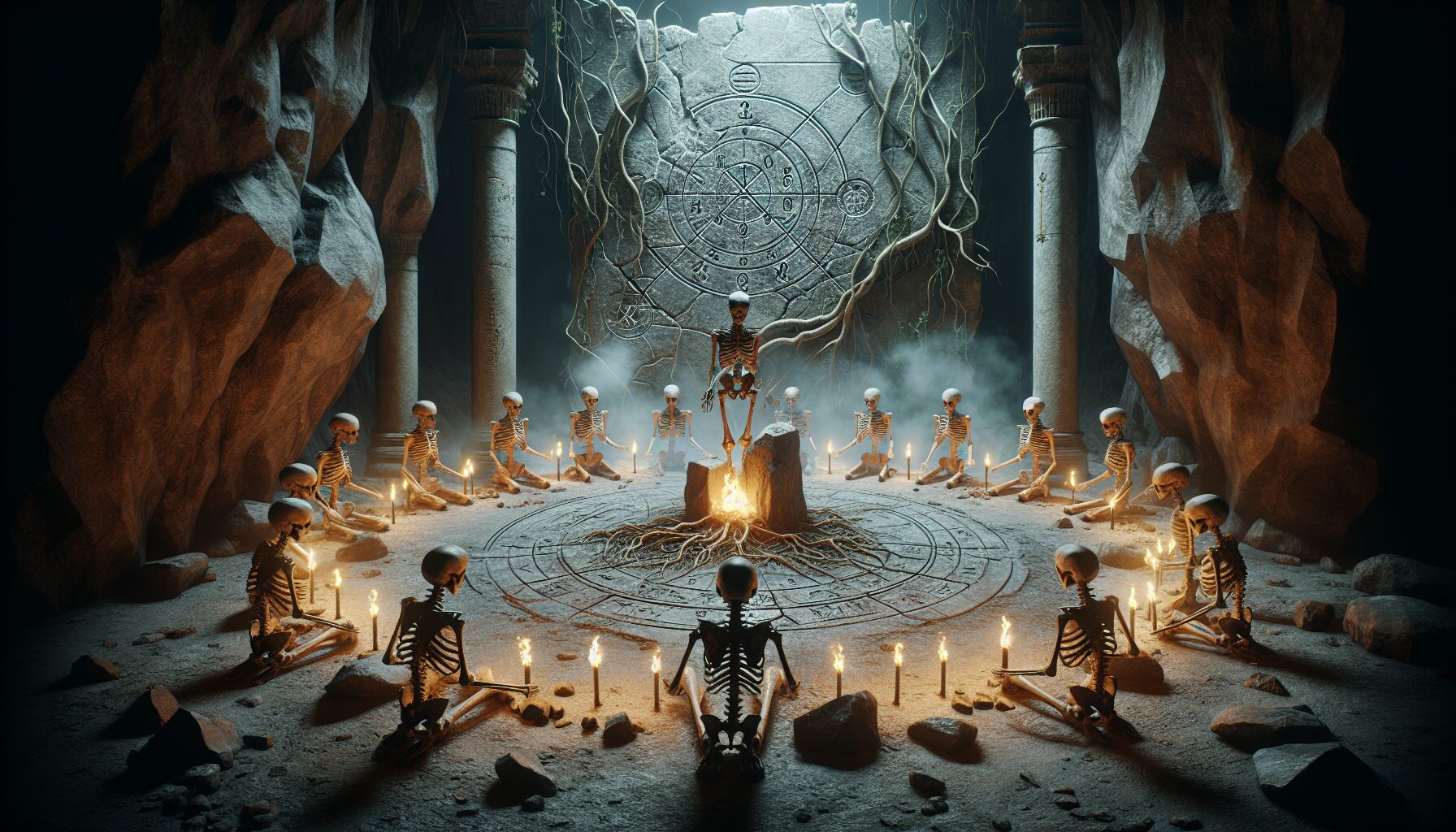In the rich tapestry of human civilization, the inevitability of death has always been a profound muse. Across cultures and eras, necrotic rituals have offered a lens through which societies understand impermanence and the art of letting go. Far from being mere macabre observances, these rituals are testaments to humanity’s enduring endeavor to embrace the transient nature of life.
The Philosophical Underpinnings of Necrotic Rituals
Impermanence is a central theme in many spiritual philosophies, serving as a reminder that everything that begins also has an end. This concept is especially pronounced in the philosophical traditions of Buddhism. Thich Nhat Hanh, a renowned Buddhist monk, once said, “Thanks to impermanence, everything is possible.” (Thich Nhat Hanh) This quote underscores the potential for growth and change, highlighting the importance of accepting life’s ephemerality.
Necrotic rituals manifest this understanding by providing frameworks within which communities can process loss, celebrate life, and transition between states of being. By engaging with death in a structured way, participants can find peace and closure.
Historical Practices Acknowledging Impermanence
-
Ancient Egyptian Mummification: The intricate processes involved in mummification demonstrate the Egyptians’ profound respect for the afterlife. By preserving the bodies of the deceased, Egyptians viewed death not as an end but a transition to another state, underscoring the cyclical nature of existence.
-
Mexican Día de los Muertos: Celebrated primarily in Mexico, the Day of the Dead is a vibrant remembrance of ancestors. Altars, or ofrendas, are adorned with photographs, marigold flowers, and favorite foods of the deceased, illustrating a joyous acceptance of death as a natural part of life’s continuum.
-
Tibetan Sky Burials: This practice is based on the Vajrayana Buddhist belief in transmigration of spirits. The ritual involves exposing the body to the elements and scavengers, symbolizing the return of the body to nature and the continuous cycle of life and death.
The Modern Resurgence of Necrotic Rituals
In contemporary times, there is a growing movement to rekindle traditional necrotic rituals. This resurgence is often driven by a desire to counteract the often sterile and impersonal modern treatment of death. By re-engaging with these ancient practices, individuals can find solace and meaning in death’s inevitability.
“Death is not the opposite of life but a part of it.” —Haruki Murakami
This recognition has led to the development of new ceremonies that emphasize sustainability and community. Green funerals and natural burials, for instance, reflect a growing awareness and respect for the environment, resonating with the ethos of returning to the Earth.
Ritual as a Personal Journey
Participation in necrotic rituals is often a deeply personal journey. For many, these practices provide a space for reflection, catharsis, and the fostering of connections. Here are a few ways individuals engage with these practices today:
-
Personal Altars: Inspired by traditions such as Día de los Muertos, individuals create small altars at home. These spaces often include photographs, mementos, and offerings, serving as a daily reminder of loved ones who have passed.
-
Journaling and Creative Expression: Many turn to writing, art, or music as a means to process grief and explore the concept of impermanence. Through these creative outlets, people can transform pain into something beautiful and enduring.
-
Mindful Practices: Meditation and mindfulness are powerful tools for embracing change and impermanence. These practices can cultivate a deeper appreciation for the present moment and foster acceptance of life’s fleeting nature.
Embracing Impermanence in Everyday Life
While traditional rituals provide structured ways to engage with death, there are countless opportunities to embrace impermanence in daily life. Simple activities such as mindful breathing, spending time in nature, or appreciating the ephemeral beauty of a sunset can serve as reminders of life’s transient beauty.
Moreover, rethinking our relationship with material possessions can lead to greater peace and fulfillment. Adopting a minimalist lifestyle, for instance, encourages the notion that less is more, emphasizing experiences over things.
A Global Dialogue on Death
The conversation surrounding necrotic rituals is becoming increasingly global. With platforms that connect people from around the world, there is a unique opportunity to share and learn from diverse cultural practices. As societies continue to evolve, the integration of traditional and contemporary rituals can provide a holistic approach to embracing impermanence.
In conclusion, necrotic rituals offer profound opportunities for reflection and growth. By engaging with these practices, individuals and communities around the world can find deeper meaning and connection with the cycle of life and death. Through understanding and acceptance, the acceptance of impermanence becomes not a source of fear, but a catalyst for living more fully.
For more insights into these practices, explore resources from cultural studies, browsing through collections such as the fascinating articles at The Metropolitan Museum of Art.


